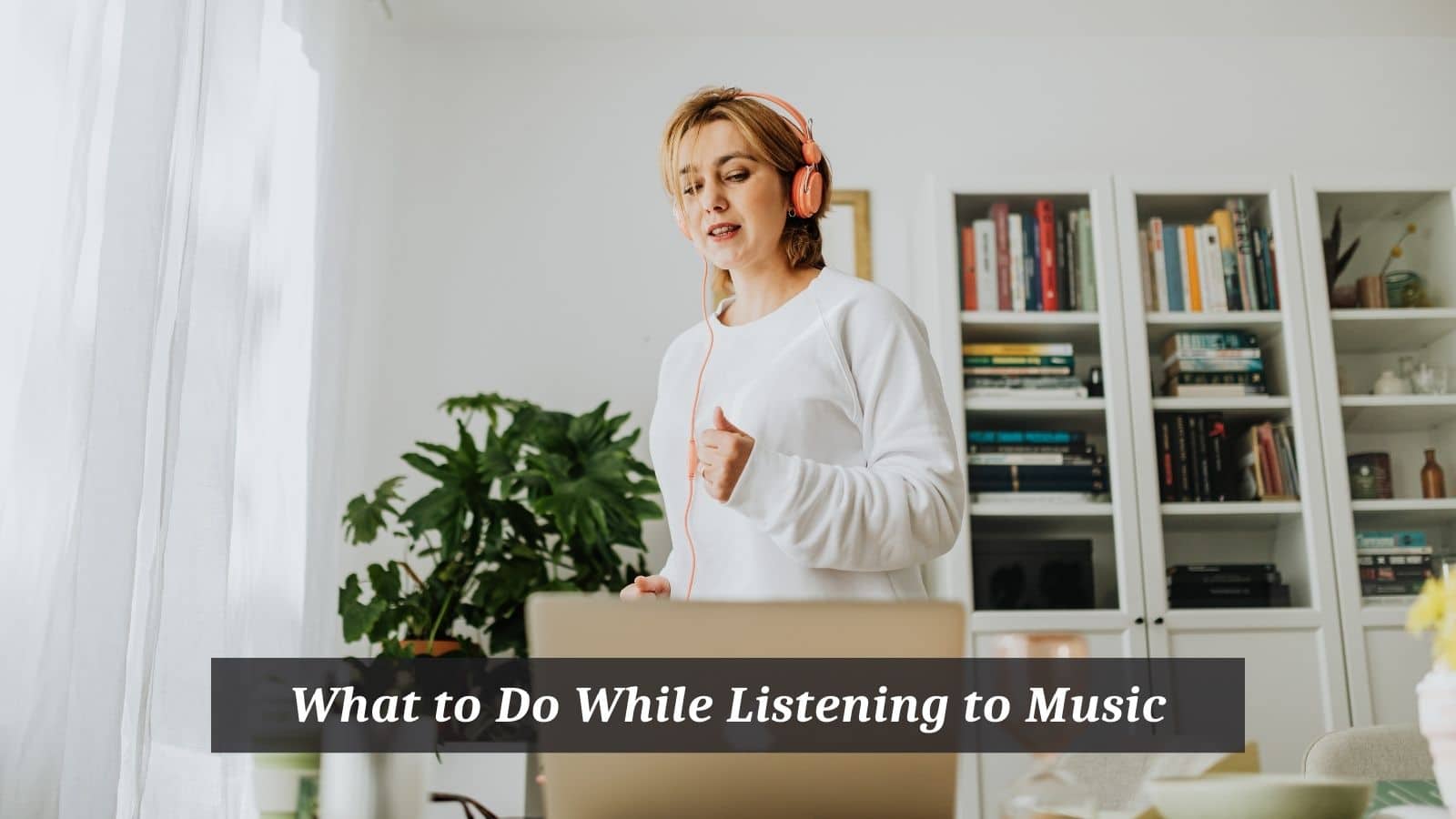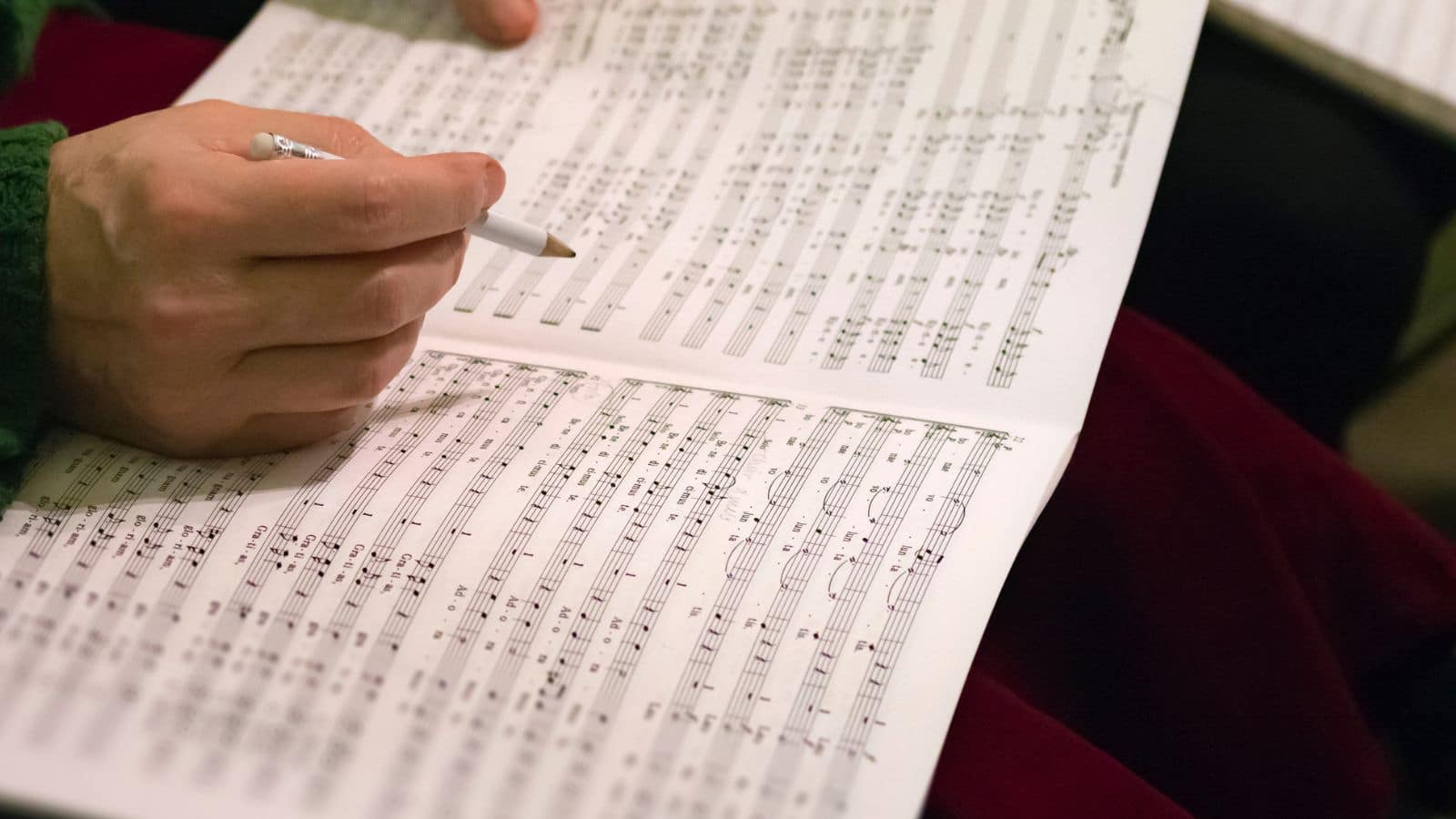
Music can transport us to magical worlds, bring back happy memories, or help us relax. So next time you listen to music, why not combine it with one of your favorite activities? We’ve put together some ideas if you’re unsure what to do.
What to Do While Listening to Music
Activities for Classical Musicians
Playing and discovering new music is essential to any (classical) musician’s life. Reading the score along with the music is an excellent way to see how a composer combines certain elements to create tone color, approach a particular compositional technique, or how the composer structure the harmonies.
Practice Score Reading
Reading the score while listening to music allows you a somewhat passive-yet-active way to engage with the score. Instead of actively playing your instrument, you can compare how other musicians approach a piece of music: their tempos, phrasing, or how they tease out internal rhythms or melodies, to name a few.
Be sure to have a pencil at hand while practicing active score reading to mark your observations on the score. Passive score reading means you’ll read along as the music plays, and this is also a worthwhile exercise because you can see the intricacies of the score from another perspective.
Here are some of our favorite guides on YouTube to get you started:
- Inside the Score offers video essays, musical discussions, and in-depth classical, art, and film music analyses.
- Boosey & Hawkes offers regular read-along videos from their vast catalog of sheet music with performances. They are highly recommended!
- Richard Atkinson’s channel offers video analyses of classical pieces focussing on the composers’ craftsmanship and use of counterpoint. And it is color-coded so you can see everything. Yay for modern technology!
There are many other creators to discover on YouTube, and when you find you like, subscribe to their channel and support them financially if you’re able. Even if you can’t help your favorite creators financially, hit like, leave a nice comment, and share their work with your friends.
Host a Score Party
While I was studying music at university, we regularly organized ‘score parties.’ Our group of friends would come together, choose a recording, borrow the scores from the library, and have a ‘score party.’
Those who played orchestral instruments would bring their instruments along, and we then had ‘miniature lectures’ on some aspects of the score when we were curious about where the instrument in question could be illustrated in person.
This helped all of us gain a deeper understanding of the intricacies of composing for and understanding specific instruments.
Or, borrow a score from the library and sight-read a quartet or piano trio—just make sure everyone’s parts are equally difficult or playable so that you don’t struggle and turn it into labor rather than a fun activity.
Top 5 Activities for Non-Musicians (and Musicians)
While not everyone who reads our work is a classical musician or has the score to their favorite pop song ready to follow, you can enjoy many other activities while listening to music. Let’s take a look.
Cooking or Baking
Remember when everyone was baking during the Covid-19 crisis? Baking (and cooking or following a recipe) has therapeutic benefits. Put on your favorite playlist, and let the creative juices start flowing (literally and figuratively).
Not only will you save money by preparing and cooking your own meals at home, but you also get the mental health benefits of engaging in an activity that leads to a sense of achievement. Baking can also help you reduce stress levels because there’s a beginning and an end with a positive outcome.
If your cake flops, so what! Mash it up and pour some custard over it for a delicious dessert while you listen to your favorite tunes.
Do Nothing
In today’s fast-paced world, doing nothing may seem like a sin that we should avoid at all costs. But sitting in your favorite chair while doing nothing and listening to your favorite music can be therapeutic and help you recharge your mental batteries.
Read a Book
Soft music in the background can help you have a more pleasant reading experience and help you concentrate on your reading. For example, in Haruki Murakami’s novel Kafka on the Shore, there’s a whole chapter devoted to a trucker who cannot get enough of Beethoven’s Archduke Trio.
If you prefer psychological thrillers, The Quiet Girl by Peter Høeg is about a man with a deep affinity for the music of JS Bach. Sometimes, great literary works also inspire lovely music!
Workout
Love it or hate it, physical exercise is vital for our mental and physical well-being. Listening to music while taking a brisk walk outside or doing cardio can help distract you from the pain or exhaustion. Moreover, it also allows you to keep your rhythm constant.
So invest in wireless headphones or earphones, load your favorite music on a playlist, and be inspired during your workout.
Here are two playlist recommendations:
- This YouTube playlist is filled to the brim with classical music to keep you going (the accompanying pictures are a hoot!)
- Classical Running on Spotify offers uplifting and calming gems and are gym playlist-worthy gems
Work of Study
Some people may say listening to music while working or studying is too distracting, depending on what you like. Lofi music is an excellent way to get some work done or listen to while studying because it does not distract you with vocals or loud instrumental bursts.
If you find music too distracting while working or studying, experts recommend avoiding music.
Conclusion
Classical musicians benefit from listening to music with or without the score to understand better the composer’s mind and how a piece of music is structured. You can do these things as a musician or non-musician while listening to music. In addition, listening to music can turn mundane tasks into fun activities.



